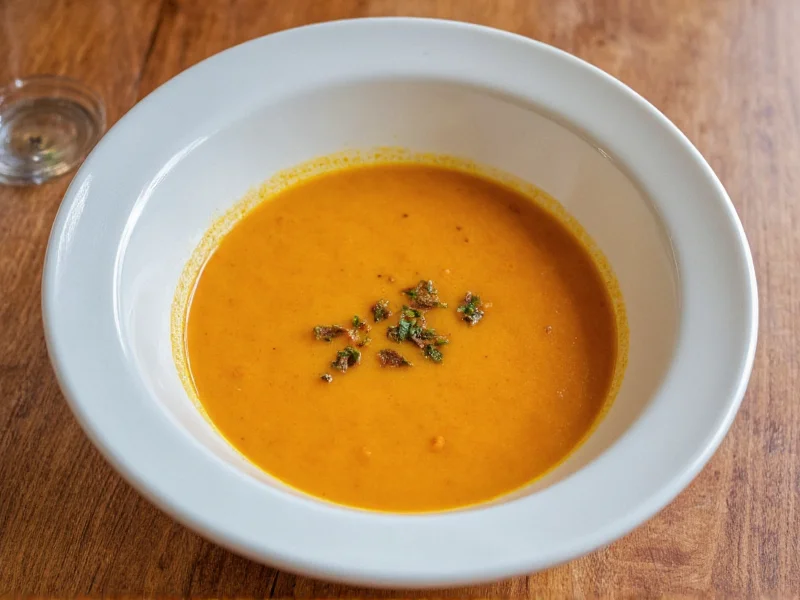Soup pictures provide essential visual information that complements recipes and culinary knowledge. When properly captured, these images reveal critical details about texture, ingredient distribution, color variations, and presentation styles that help viewers identify specific soup varieties and assess preparation quality. Understanding how to interpret soup photography can significantly enhance your cooking experience and food appreciation.
Understanding Soup Visual Characteristics
Each soup variety possesses distinctive visual traits that serve as identification markers. Clear broths appear transparent with visible herb flecks and meat particles suspended throughout. Cream-based soups demonstrate uniform opacity with smooth consistency, while chowders show chunky vegetable and protein elements suspended in a milky base. The presence of specific garnishes often indicates regional variations—cilantro sprigs suggest Mexican influences, while crème fraîche dots signal French preparation.
Common Soup Types and Their Visual Signatures
Recognizing soup varieties through visual examination requires attention to specific characteristics. The following table outlines key visual identifiers for popular soup categories:
| Soup Category | Color Indicators | Texture Clues | Distinctive Elements |
|---|---|---|---|
| French Onion | Deep amber broth | Visible caramelized onion layers | Melted cheese crust topping |
| Tomato Basil | Bright red with green flecks | Smooth with possible tomato seed visibility | Fresh basil leaves as garnish |
| Miso Soup | Light brown cloudy appearance | Visible miso paste swirls | Tofu cubes and seaweed pieces |
| New England Clam Chowder | Opaque white base | Chunky with visible clam pieces | Potato cubes and bacon bits |
Elements of Effective Soup Photography
Capturing authentic soup pictures requires attention to lighting, composition, and timing. Natural side lighting creates dimension by highlighting steam rising from hot soup and emphasizing texture variations. Photographing within five minutes of preparation captures optimal steam elements that indicate freshness. The inclusion of contextual elements like appropriate serving vessels, complementary side items, and relevant utensils provides valuable visual context that helps viewers understand the soup's cultural origins and proper serving style.
Cultural Presentation Differences
Soup presentation varies significantly across culinary traditions. Japanese miso soup typically appears in small lacquered bowls with minimal garnish, emphasizing simplicity and balance. Italian minestrone showcases vibrant vegetable colors against a tomato-based broth in wide, shallow bowls. Russian borscht often features a dollop of sour cream creating a distinctive white swirl against the deep red beet base. These presentation styles provide visual cues about cultural origins and traditional serving methods that become apparent through careful examination of authentic soup pictures.
Practical Applications of Soup Visual Analysis
Understanding soup pictures extends beyond mere identification. Home cooks can diagnose preparation issues by examining visual characteristics—cloudy consommé indicates improper clarification, while separated cream soups suggest temperature control problems. Food professionals use high-quality soup imagery for menu development, ensuring visual appeal matches descriptive text. Culinary students develop palate memory by associating specific visual traits with flavor profiles, enhancing their overall sensory evaluation skills.
Developing Visual Soup Recognition Skills
Building proficiency in identifying soups through visual examination requires systematic observation. Start by analyzing broth clarity—transparent, opaque, or somewhere in between. Next, examine ingredient distribution and size. Notice color variations that indicate specific components like turmeric in golden curries or paprika in Hungarian goulash. Finally, observe garnish placement and serving vessel style, which often provide cultural context. Regular practice with diverse soup pictures develops visual literacy that enhances both cooking abilities and dining experiences.
Frequently Asked Questions
How can I tell if a soup picture shows a authentic preparation?
Authentic soup pictures display characteristic elements specific to their cultural origin. Look for traditional garnishes, appropriate serving vessels, and ingredient proportions consistent with regional preparations. Authentic images won't show anachronistic elements or mismatched components that wouldn't appear in traditional preparations.
What visual cues indicate a properly prepared cream soup?
Well-prepared cream soups show uniform color without separation, a smooth surface with minimal bubbles, and appropriate ingredient visibility. The soup should coat the back of a spoon without appearing watery or overly thick. Steam rising from the surface indicates proper serving temperature.
Why do some soup pictures look more appealing than others?
Professional soup photography uses strategic lighting to highlight texture and color, captures images at optimal steam points, and arranges ingredients to showcase key components. The most appealing soup pictures often include contextual elements like fresh ingredients nearby or appropriate serving ware that creates visual storytelling beyond the bowl itself.
How can soup pictures help improve my cooking skills?
Studying high-quality soup pictures develops visual recognition of proper texture, ingredient distribution, and presentation. This visual literacy helps identify when your own preparations match expected standards. Comparing your results to reference images provides immediate feedback on aspects like broth clarity, garnish placement, and overall visual appeal.
What's the difference between soup stock and broth in visual terms?
Stock typically appears slightly cloudy with visible gelatinous elements when cooled, while broth shows greater clarity with more pronounced fat droplets on the surface. Stock often contains larger bone fragments and vegetable pieces, whereas broth demonstrates more refined ingredient integration with smaller, uniform components.











 浙公网安备
33010002000092号
浙公网安备
33010002000092号 浙B2-20120091-4
浙B2-20120091-4